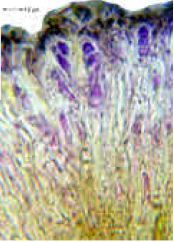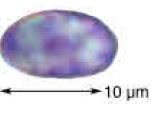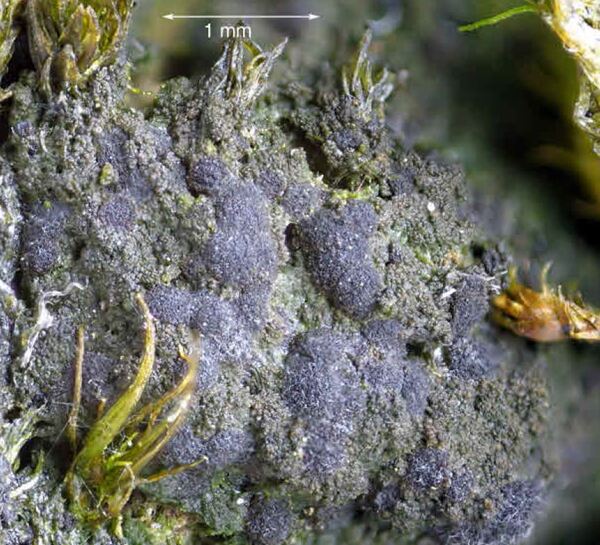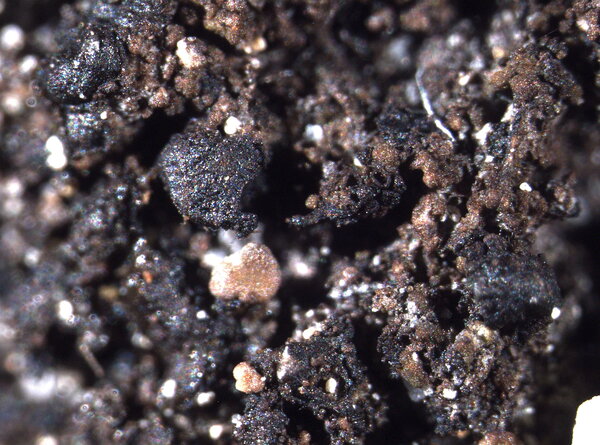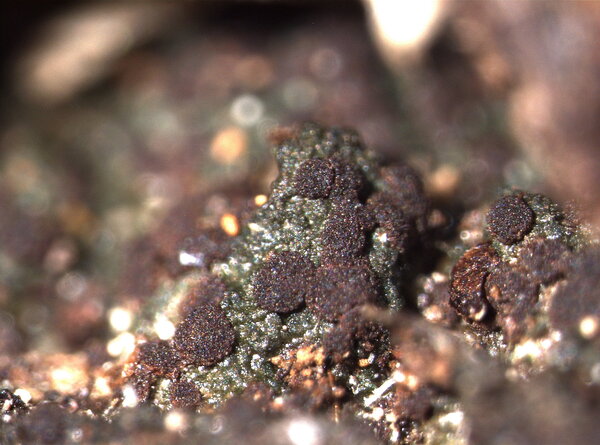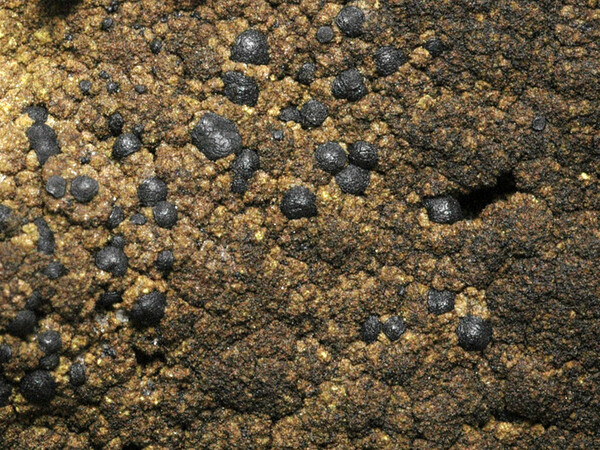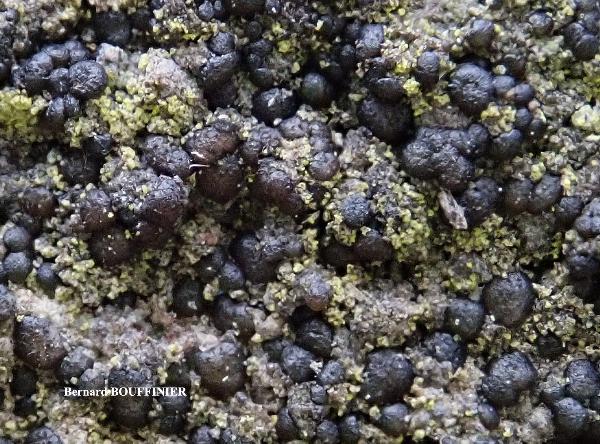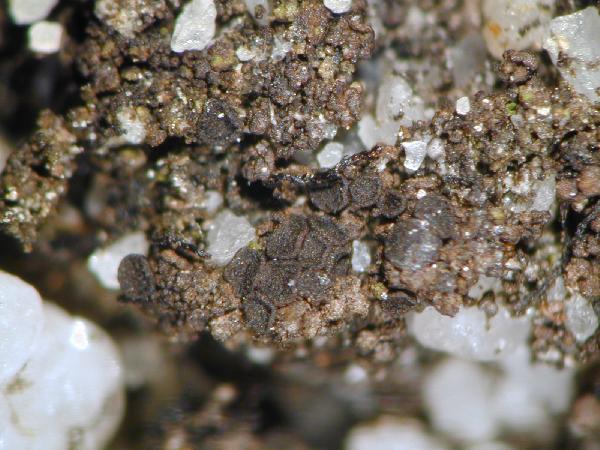Placynthiella uliginosa (Schrad.) Coppins & P. James
Lichenologist, 16: 245, 1984. Basionym: Lichen uliginosus Schrad. - Spicil. Fl. Germ., 1: 88, 1794.
Synonyms: Biatora humosa (Hoffm.) Arnold; Biatora uliginosa (Schrad.) Fr.; Biatora uliginosa var. humosa (Hoffm.) Fr.; Lecidea humosa (Hoffm.) Leight.; Lecidea uliginosa (Schrad.) Ach. non auct.; Lecidea uliginosa var. argillacea (Kremp.) Hedl.; Lecidea uliginosa var. humosa (Hoffm.) Ach.; Saccomorpha arenicola Elenkin; Saccomorpha uliginosa (Schrad.) Hafellner; Stereonema chthonoblastes A. Braun ex Kütz.
Distribution: N - Frl, Ven, TAA (Nascimbene 2006b, 2008b, Nascimbene & al. 2007b, 2022), Lomb, Piem (Isocrono & al. 2004), VA (Piervittori & Isocrono 1999), Emil (Nimis & al. 1996, Benesperi 2009, Fariselli & al. 2020). C - Tosc (Benesperi & al. 2007), Marc (Nimis & Tretiach 1999), Sar (Nöske 2000). S - Si (Falco Scampatelli 2005).
Description: Thallus crustose, episubstratic, subgelatinous when wet, brown or black-brown when dry, dark greenish brown when wet, often faintly wrinkled when dry, consisting of 25-100 µm wide, globose goniocysts. Apothecia biatorine, often confluent, pinkish brown to dark reddish brown, more rarely almost black, 0.1-0.5 mm across, with an initially flat but soon convex, rough disc, and a thin, soon excluded proper margin. Proper exciple thin, brown, pseudoparenchymatous; epithecium brown, K-; hymenium pale to dark brown or brown-streaked, 60-85 µm high, I+ reddish orange; paraphyses richly branched, c 1.2 µm thick in lower part, the apical cells up to 5-6 µm wide, often with a brown cap; hypothecium fuscous dark brown to brown-black, paler in upper part, K+ intensifying brown, I+ orange-brown. Asci 8-spored, cylindrical-clavate, thin-walled, the apical dome mostly I-, Trapelia-type. Ascospores 1-celled, hyaline, ellipsoid, (7-)8-14(-18) x (4-)5-7(-9) µm. Pycnidia subglobose, brown-black. Conidia bacilliform, 3.5-5 x c. 1 µm. Photobiont chlorococcoid. Spot tests: thallus K-, C-, KC-, P-, UV-. Chemistry: without lichen substances. Note: a cool-temperate to boreal-montane, probably circumpolar lichen, mostly found on acid soil, more rarely on strongly decomposed lignum; most frequent in the Alps, rarer along the Apennines, where it is most common in old Castanea stands.
Growth form: Crustose
Substrata: lignum, soil, terricolous mosses, and plant debris
Photobiont: green algae other than Trentepohlia
Reproductive strategy: mainly sexual
Commonnes-rarity: (info)
Alpine belt: rather rare
Subalpine belt: rather common
Oromediterranean belt: very rare
Montane belt: rare
Submediterranean belt: extremely rare
Padanian area: absent
Humid submediterranean belt: very rare
Humid mediterranean belt: absent
Dry mediterranean belt: absent
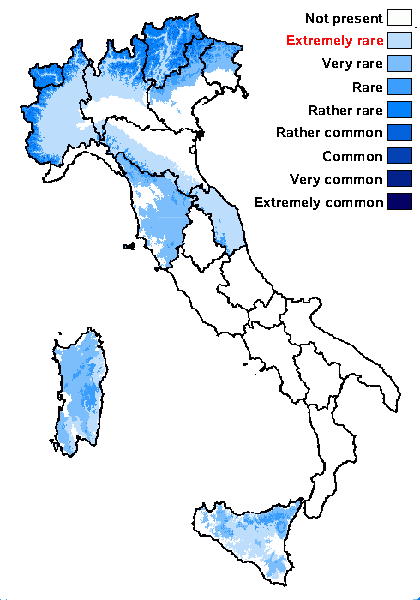
Predictive model
Herbarium samples
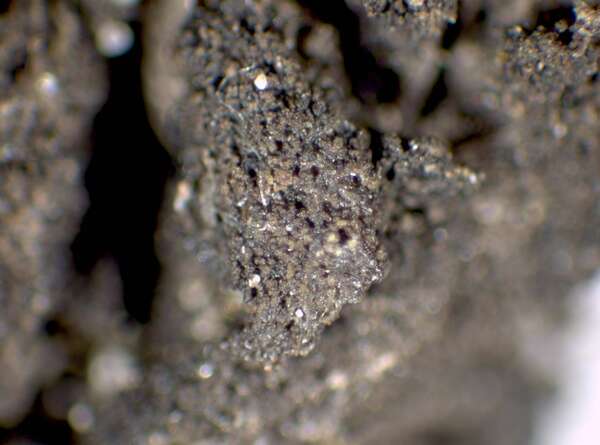

P.L. Nimis; Owner: Department of Life Sciences, University of Trieste
Herbarium: TSB (15095)
2001/11/29
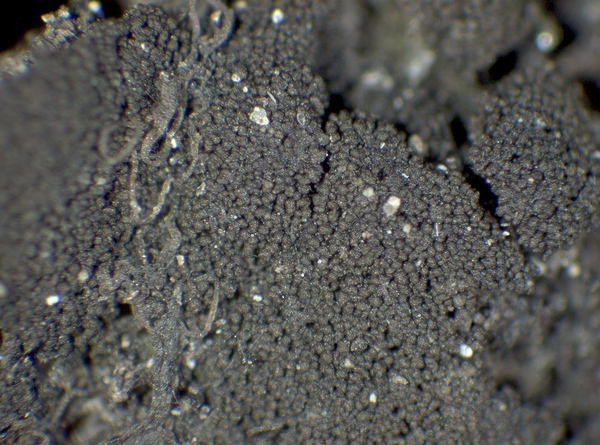

P.L.Nimis; Owner: Department of Life Sciences, University of Trieste
Herbarium: TSB (36967)
2008.02.28
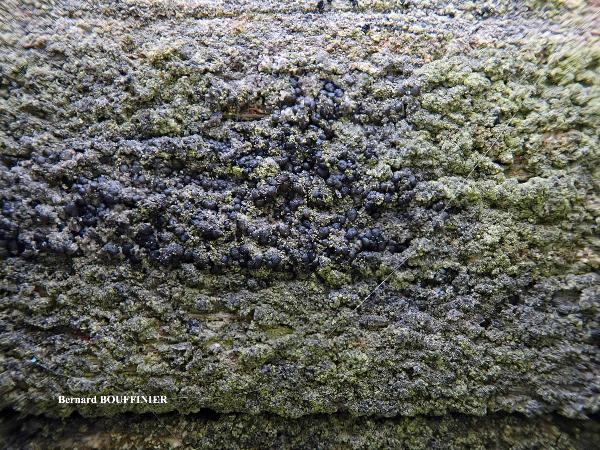
Bernard Bouffinier - Source: http://www.lichensmaritimes.org/index.php?task=fiche&lichen=1049&lang=en
France, Rostellec
sur épave de bateau en bois
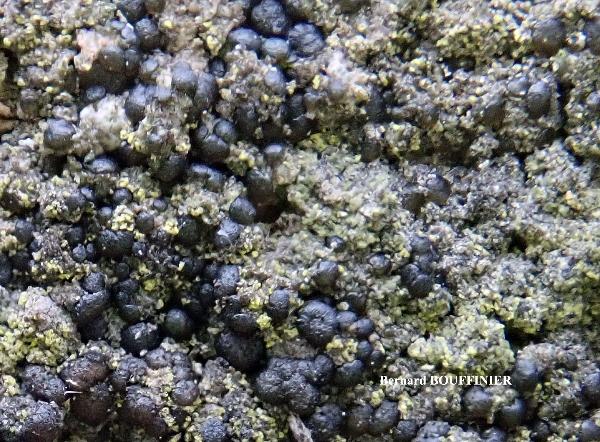
Bernard Bouffinier - Source: http://www.lichensmaritimes.org/index.php?task=fiche&lichen=1049&lang=en
France, Rostellec
sur épave de bateau en bois

Bernard Bouffinier - Source: http://www.lichensmaritimes.org/index.php?task=fiche&lichen=1049&lang=en
France, Rostellec
sur épave de bateau en bois
Growth form: Crustose
Substrata: lignum, soil, terricolous mosses, and plant debris
Photobiont: green algae other than Trentepohlia
Reproductive strategy: mainly sexual
Commonnes-rarity: (info)
Alpine belt: rather rare
Subalpine belt: rather common
Oromediterranean belt: very rare
Montane belt: rare
Submediterranean belt: extremely rare
Padanian area: absent
Humid submediterranean belt: very rare
Humid mediterranean belt: absent
Dry mediterranean belt: absent

Predictive model
| Herbarium samples |


P.L. Nimis; Owner: Department of Life Sciences, University of Trieste
Herbarium: TSB (15095)
2001/11/29


P.L.Nimis; Owner: Department of Life Sciences, University of Trieste
Herbarium: TSB (36967)
2008.02.28

Bernard Bouffinier - Source: http://www.lichensmaritimes.org/index.php?task=fiche&lichen=1049&lang=en
France, Rostellec
sur épave de bateau en bois

Bernard Bouffinier - Source: http://www.lichensmaritimes.org/index.php?task=fiche&lichen=1049&lang=en
France, Rostellec
sur épave de bateau en bois

 INDEX FUNGORUM
INDEX FUNGORUM
 GBIF
GBIF
 DOLICHENS
DOLICHENS

